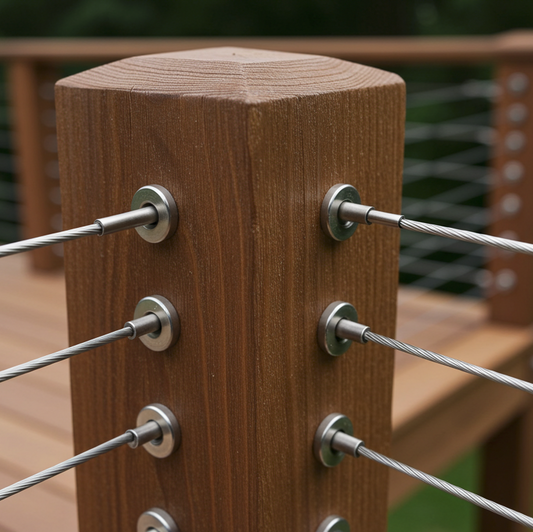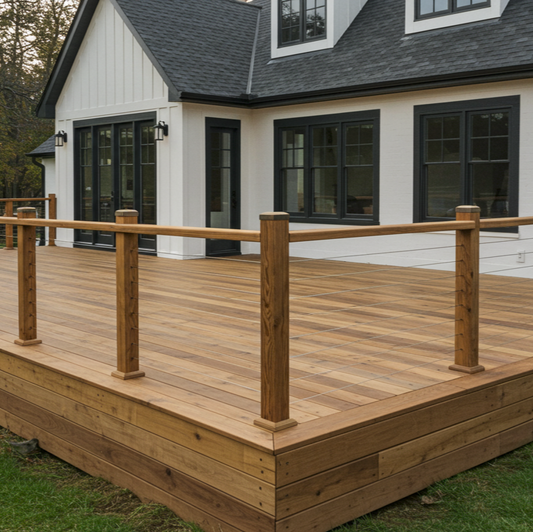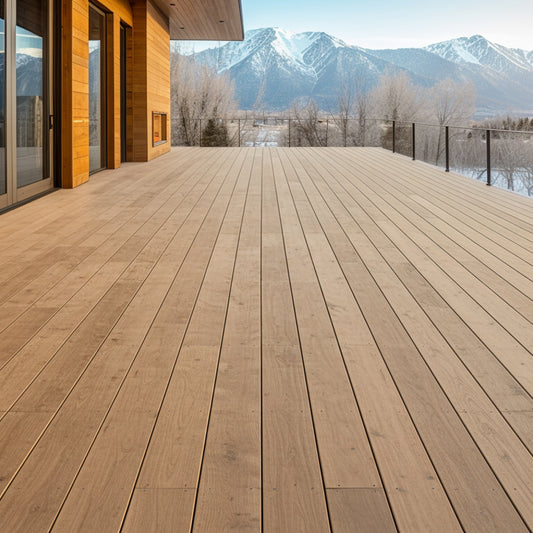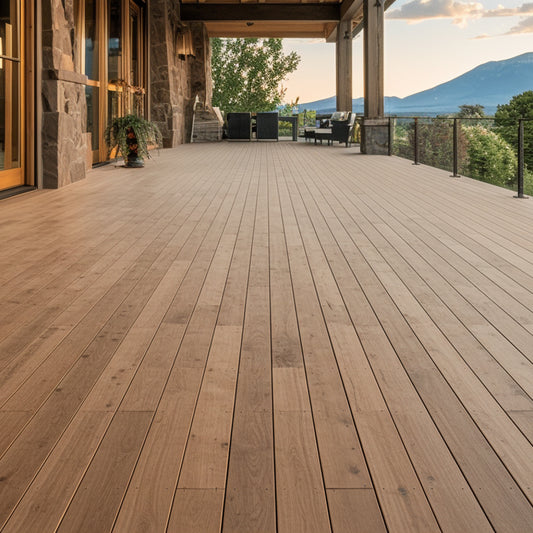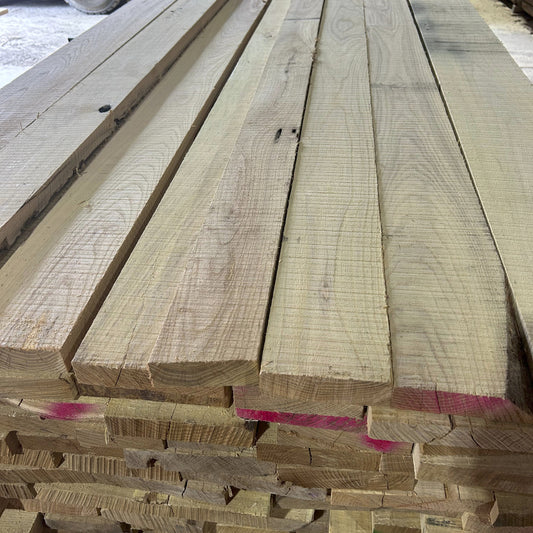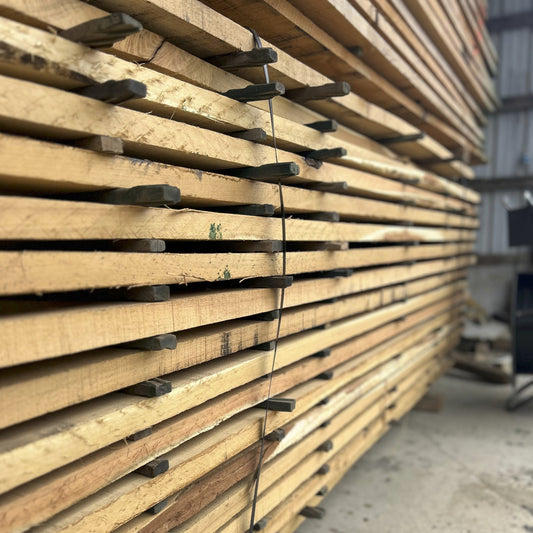Locust Lumber
-
Black Locust Deck Post
Regular price From $8.00 USDRegular priceUnit price / per -
Black Locust Decking Lumber
Regular price From $3.50 USDRegular priceUnit price / per -
Black Locust Hardwood Lumber - 25 bdft pack
Regular price $118.75 USDRegular priceUnit price / per
Collection: Locust Lumber
Common Trade Name: Black locust, Robinia, False Acacia
Scientific Name: Robinia pseudoacacia
Color Range: Greenish-yellow heartwood that gradually turns to russet brown as the lumber ages. Sapwood is yellowish and narrow. Locust wood is ring-porous with distinct growth rings.
Availability: Black locust wood is widely available and considered a sustainable wood for forestry and local community needs.
Janka Scale Hardness: 1,700 lbf (7, 560 N)
Average Weight per BF: 48.0 lbs/Cu. Ft.
Common Uses: boatbuilding, flooring, fencing, footbridges, mine timbers, railroad ties, furniture, and turned objects
What Is Black Locust Lumber?
Black locust (Robinia pseudoacacia) is a hardwood that grows 40 to 60 feet tall and about 1 to 2 feet in diameter. They thrive in rich, moist soil with clear, straight bole or trunks in good areas. Black locust is rated the most environment-friendly wood with many excellent lumber attributes. It is rot-resistant, strong, dense, long-lasting, attractive, and non-toxic.
Black locust lumber is straight-grained with a medium texture. Generally, its lumber is average when it comes to workability. Despite the straight grain, locusts can be challenging to manage with hand and machine tools. Because of its high density and hardness, the wood is less workable than other hardwoods.
Where Is Locust Sourced From?
A variety of locusts grow in the central-eastern United States, but it is widely naturalized in temperate regions. It is native to Pennsylvania and the Appalachian Mountains and borders southern Indiana, Oklahoma, and Georgia to Louisiana. Many of the trees escaped cultivation and thrive efficiently anywhere. According to new studies, black locust brings out hope for sustainable forestry in many of the world’s rainforests.
What to Look for When Buying Locust
Black locust is often marketed as solid lumber or veneer. For black locust lumber, choose the cut without sapwood and early growth. These yellowish parts are not as durable as the heartwood and are prone to decay, especially on the ground line. Locust lumber is subjected to low shrinkage upon drying, so medium kiln-dried to dried are the best options.
Pros and Cons of Locust
Locust lumber is a robust hardwood used for many practical construction applications. Although its tree is vilified for its invasive growth, experts acknowledge its value in reforestation and the lumber industry. The wood has a wide range of uses, from wood paneling, tongue-and-groove, wood slat wall and floors, and other heavy-duty furniture.
Pros
- Strength and durability
- Shock and pressure-resistant
- Decay-resistant
- Longevity
- No special maintenance needed
Cons
- Prone to insect infestations and diseases
- Bores and holes may be present in the lumber
- Very hard and heavy
- May be difficult to work
FAQs
How hard is locust?
Locust has a Janka scale hardness of 1,700 pound-force, making it as hard as golden teak and harder than oak. The wood is also stiffer than hickory.
Is black locust expensive?
The price range of locusts varies according to location, but it is within the moderate price range.
Is black locust waterproof?
Yes, locust lumber is waterproof and weather-resistant. It can withstand moisture longer than other hardwoods. However, finishing and sealing are still recommended to help it keep its aesthetic qualities.
Where to Buy Locust

